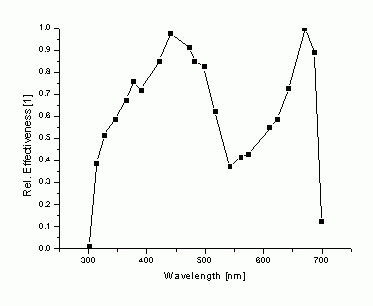The Photosynthesis Apparatus
The Photosynthesis Apparatus Assignment Help | The Photosynthesis Apparatus Homework Help
The Photosynthesis Apparatus
Photosynthesis takes place within the plastids except in blue-green algae, and bacteria. In green plants the plastids contain chlorophyll, and are called chloroplasts. Chloroplasts contain many membranous bodies called grana. Each granum consists of disc-shaped membranous sacs called thylakoids piled one on top of the other like coins. The lamellae of the discs of spinach chloroplasts have arrays of repeating subunits called quantasomes. These are believed to be the units of photosynthesis.Photosynthesis pigments
In higher plants and green algae the chlorophyll actually consists of two closely related pigments, chlorophyll a (Chl a) and chlorophyll b (Chl b). Chlorophyll a is the principal pigment and chlorophyll b the accessory pigment. In brown algae, diatoms and flagellates, chlorophyll a is the principal pigment and chlorophyll c the accessory pigment. Red algae contain chlorophyll a as the principal pigment and chlorophyll d as the accessory pigment.Structure of chlorophyll. The empirical formula of chlorophyll a is C55H22O5N4Mg. Chlorophyll a is a blue-green microcrystalline solid, consisting of a ‘head’ and ‘tail’. The head consisting of a porphyrin ring or tetrapyrrole nucleus from which extends a tail made up of a 20-carbon grouping called the phytol. The porphyrins are complex carbon-nitrogen molecules that usually surround a metal. In chlorophyll the porphyrin surrounds a magnesium ion while in haemoglobin is surrounds an iron ion. The cytochromes of the electron transport system also have porphyrin rings. The basic unit of the porphyrin ring is the porophobilinogen molecule. Four such payrrole make units up the tetrapyrrole structure. Phytol is a long straight-chain alcohol containing a single double bond. It may be regarded as a hydrogenated carotene (vitamin A).

Absorption spectrum of chlorophyll. As mentioned previously, the amount of light (energy) absorbed at different wave lengths constitutes the absorption spectrum. It has also been seen that the chlorophyll of higher plant absorbs mainly in the blue and red regions of the spectrum. There is some difference in the absorption spectra of chlorophyll a and chlorophyll b. Recent work has shown that extraction procedures change the absorption properties of chlorophyll. Thus the absorption spectra for extracted chlorophyll and chlorophyll in situ are not the same.
Bacteriochlorophyll absorbs in the infra-red and blue-violet regions.
Action spectrum. A study of the absorption spectra shows that light is primarily absorbed in the blue and red regions. Green, yellow and orange light is absorbed only slightly. If the relative effectiveness of photosynthesis at different wave-lengths is, however, studied, it is found that it differs from the absorption spectrum. There is quite a lot of photosynthetic activity even in parts of the spectrum where chlorophyll a absorbs little light. This suggests that the light energy absorbed by other pigments is transferred to chlorophyll a.

For more help in The Photosynthesis Apparatus please click the button below to submit your homework assignment.